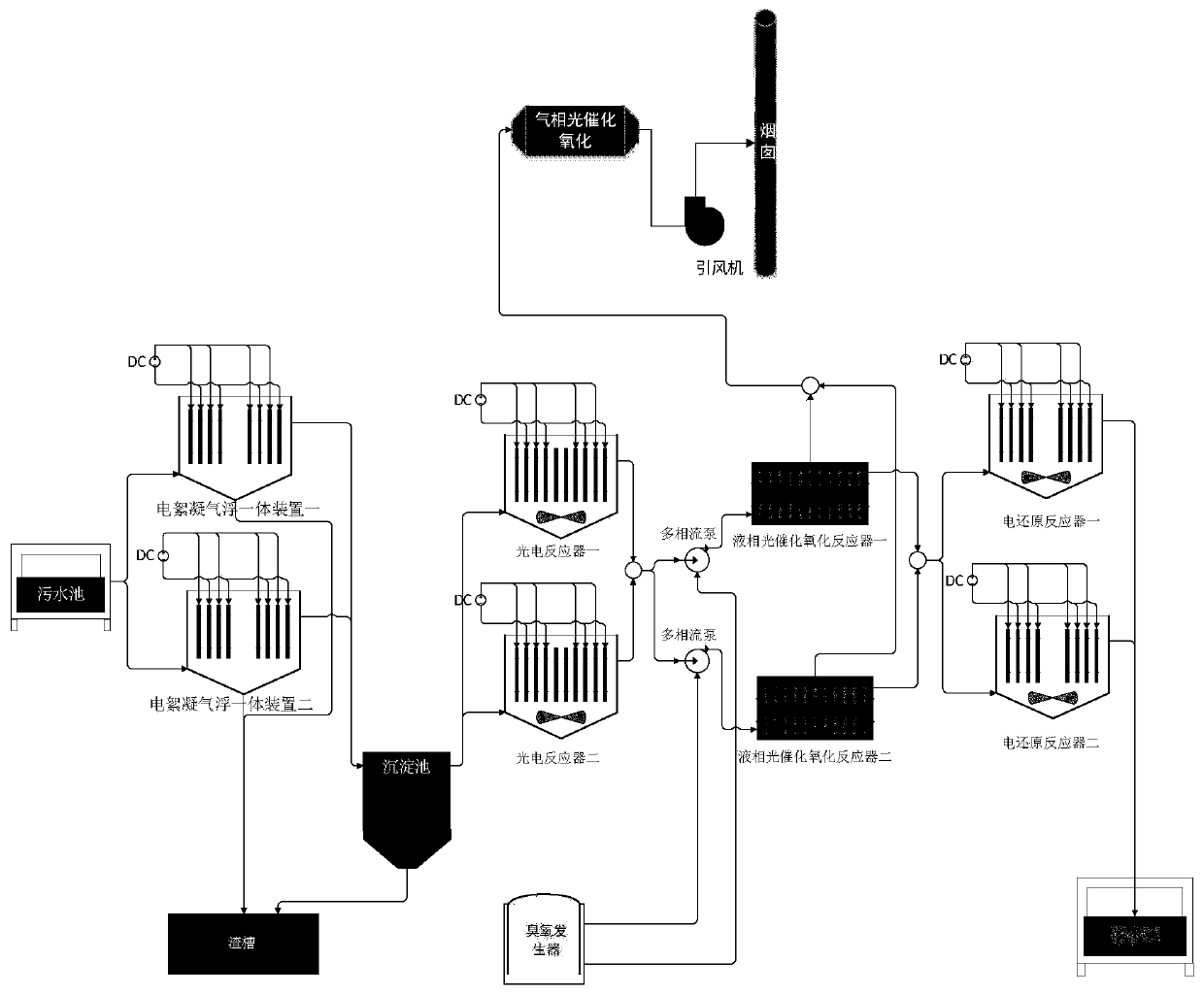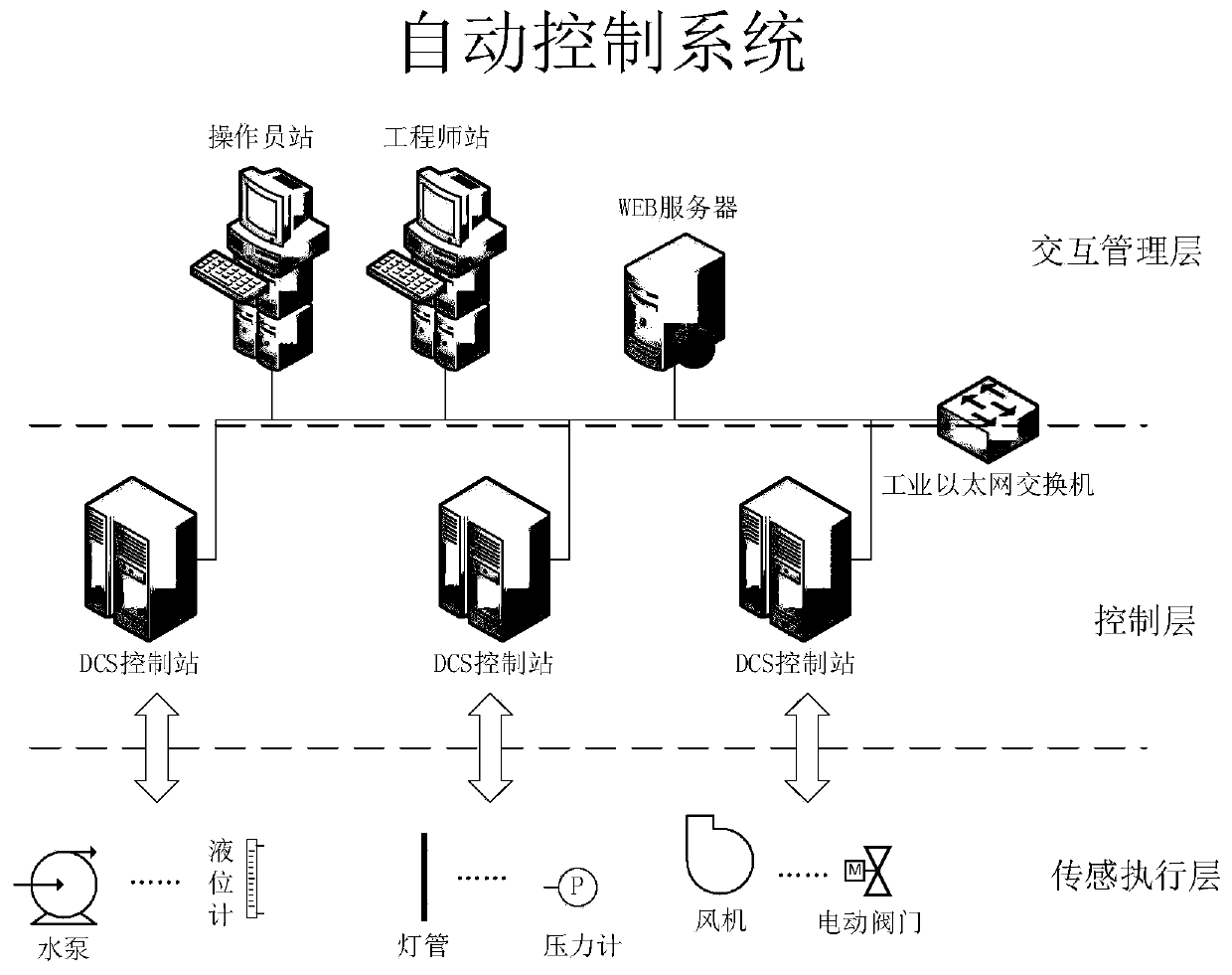Non-biochemical process for treating printing and dyeing wastewater
A kind of printing and dyeing sewage, non-biochemical technology, applied in water/sewage treatment, chemical instruments and methods, textile industry wastewater treatment, etc.
- Summary
- Abstract
- Description
- Claims
- Application Information
AI Technical Summary
Problems solved by technology
Method used
Image
Examples
Embodiment 1
[0123] Such as figure 1 A kind of non-biochemical method treatment printing and dyeing sewage process shown, described process comprises the steps:
[0124] Step S1: leachate electrocoagulation air flotation sedimentation treatment;
[0125] Step S2: the leachate treated in step S1 is treated by photolysis and electrochemical reaction;
[0126] Step S3: The leachate treated in step S2 is treated by an electric field cooperative photocatalytic oxidation reaction. After the test reaches the standard, the non-biochemical treatment of the leachate is completed. If the test does not meet the standard, enter step S4: the leachate treated in step S3 After the electrochemical reduction reaction treatment, the non-biochemical treatment of the leachate is completed;
[0127] Step S5: The exhaust gases generated in steps S1, S2, and S3 are collected and then processed by gas-phase photocatalytic oxidation, or when step S4 is included, the exhaust gases generated in steps S1, S2, S3, an...
Embodiment 2
[0157] A non-biochemical process for treating printing and dyeing sewage, characterized in that the process comprises the following steps:
[0158] Step S1: leachate electrocoagulation air flotation sedimentation treatment;
[0159] Step S2: the leachate treated in step S1 is treated by photolysis and electrochemical reaction;
[0160] Step S3: The leachate treated in step S2 is treated by an electric field cooperative photocatalytic oxidation reaction. After the test reaches the standard, the non-biochemical treatment of the leachate is completed. If the test does not meet the standard, enter step S4: the leachate treated in step S3 After the electrochemical reduction reaction treatment, the non-biochemical treatment of the leachate is completed;
[0161] Step S5: The exhaust gases generated in steps S1, S2, and S3 are collected and then processed by gas-phase photocatalytic oxidation, or when step S4 is included, the exhaust gases generated in steps S1, S2, S3, and S4 are c...
Embodiment 3
[0191] A non-biochemical process for treating printing and dyeing sewage, characterized in that the process comprises the following steps:
[0192] Step S1: leachate electrocoagulation air flotation sedimentation treatment;
[0193] Step S2: the leachate treated in step S1 is treated by photolysis and electrochemical reaction;
[0194] Step S3: The leachate treated in step S2 is treated by an electric field cooperative photocatalytic oxidation reaction. After the test reaches the standard, the non-biochemical treatment of the leachate is completed. If the test does not meet the standard, enter step S4: the leachate treated in step S3 After the electrochemical reduction reaction treatment, the non-biochemical treatment of the leachate is completed;
[0195] Step S5: The exhaust gases generated in steps S1, S2, and S3 are collected and then processed by gas-phase photocatalytic oxidation, or when step S4 is included, the exhaust gases generated in steps S1, S2, S3, and S4 are c...
PUM
| Property | Measurement | Unit |
|---|---|---|
| particle diameter | aaaaa | aaaaa |
Abstract
Description
Claims
Application Information
 Login to View More
Login to View More - R&D
- Intellectual Property
- Life Sciences
- Materials
- Tech Scout
- Unparalleled Data Quality
- Higher Quality Content
- 60% Fewer Hallucinations
Browse by: Latest US Patents, China's latest patents, Technical Efficacy Thesaurus, Application Domain, Technology Topic, Popular Technical Reports.
© 2025 PatSnap. All rights reserved.Legal|Privacy policy|Modern Slavery Act Transparency Statement|Sitemap|About US| Contact US: help@patsnap.com


